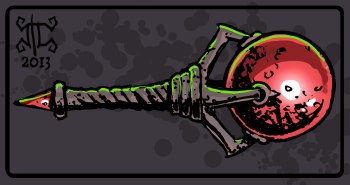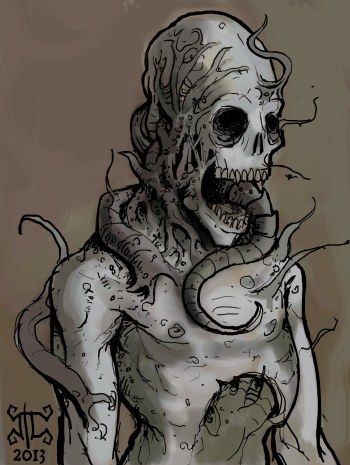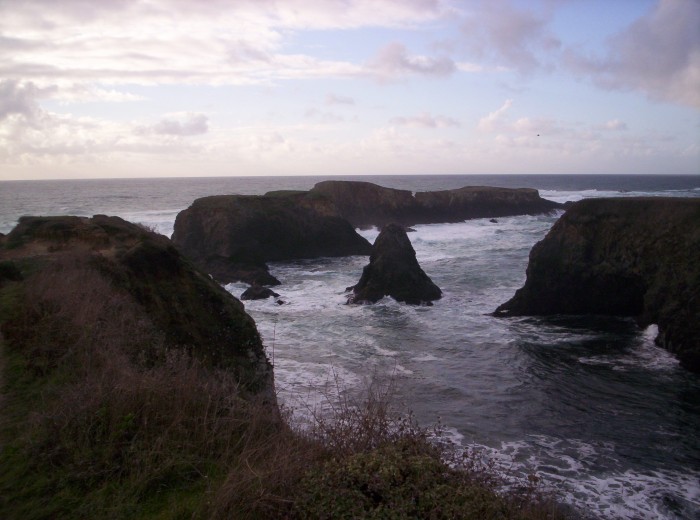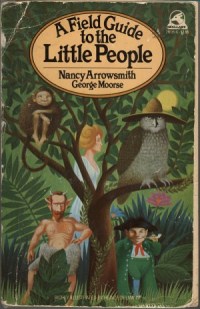
"A Field Guide to the Little People" by Nancy Arrowsmith and George Moorse is a great little book in the "fairies and elves" genre of the '70s. Published in 1977, this book is structured like a naturalists' field guide. It describes approximately 80 creatures, divided into Light Elves, Dark Elves, and Dusky Elves. Each creature entry begins with an overview of its place in folklore, followed by a description of the creature's physical appearance and habitat. Many of the entries also include a few short folktales to put the creature in their cultural context.
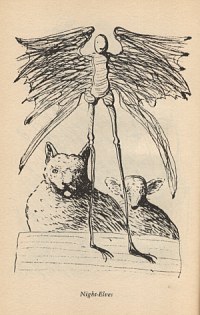
What really sets this book apart and makes it one of my favorites is the layout and artwork. First of all, the section headers in the book are calligraphy instead of type. The true stars of the book, however, are the pen and ink illustrations. They're done in a loose, gestural style that complements the primitive darkness inherent in much of the folklore described in the book. They're occasionally indistinct, like the vague afterimage of a nightmare left after waking. These are not sweetness-and-light pastel watercolor fairies. These are the dark, mischievous and occasionally downright evil creatures that lurk in the dark corners of the Dark Ages. In some ways, the illustrations remind me a bit of Goya's phantasms in "Los Caprichos," but that is another post for another time.
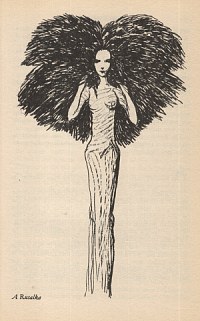
I bought this book a number of years ago and always loved the illustrations, but it was only recently that I realized that the illustrator, Heinz Edelmann, is the artist responsible for the visual design of the Beatles' "Yellow Submarine" animated film. Now, I'm not exactly the world's biggest Beatles fan, but as a kid, I always thought the psychedelic visual design of that film was, well, more than a little creepy (just look at the Blue Meanies and the giant pointing hand and you'll see what I mean). The fact that the same artist is responsible for the disturbing, primitive and borderline obscene creatures found in this book confirms that Edelmann had a knack for combining the whimsical and the disturbing.
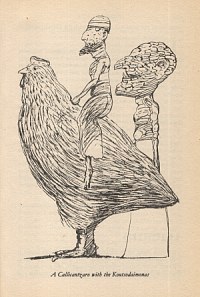
Several of my favorite illustrations from the book are reproduced here, including the Night Elves (which look like they're straight out of a Goya etching), the Rusalka from the Ukraine and the Callicantzaro and the Koutsodaimonas from Greece. There are too many excellent illustrations in the book to reproduce here, so I recommend picking up a copy if you feel so inclined. Who knows, maybe I'll do my own interpretation of one of the creatures from this book at some point.
Bibliography:
Arrowsmith, Nancy, and George Moorse. Illus. Heinz Edelmann. A Field Guide to the Little People. New York: Pocket, 1977. Print.
